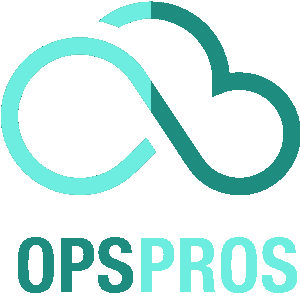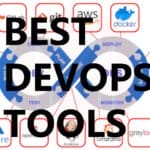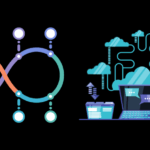 Monitoring is a crucial aspect of DevOps that can help ensure system reliability, optimize performance, and streamline troubleshooting. In a DevOps environment, monitoring involves the continuous tracking of infrastructure, applications, and services to detect and resolve issues promptly. Without proper monitoring, DevOps teams may be unable to identify and remediate performance bottlenecks, security vulnerabilities, or capacity constraints in a timely manner, which can lead to costly downtime and lost revenue.
Monitoring is a crucial aspect of DevOps that can help ensure system reliability, optimize performance, and streamline troubleshooting. In a DevOps environment, monitoring involves the continuous tracking of infrastructure, applications, and services to detect and resolve issues promptly. Without proper monitoring, DevOps teams may be unable to identify and remediate performance bottlenecks, security vulnerabilities, or capacity constraints in a timely manner, which can lead to costly downtime and lost revenue.
In this article, we will explore the benefits of implementing continuous monitoring in DevOps practices. We will also provide insights into selecting the appropriate monitoring tools, defining monitoring goals, and establishing alerting mechanisms to ensure the success of your DevOps initiatives. Whether you are new to DevOps or an experienced practitioner, this article will provide you with the knowledge and best practices needed to integrate monitoring into your workflow effectively. So, let’s dive into the world of DevOps monitoring!
What is DevOps Monitoring?
In the world of DevOps, monitoring is a critical component in ensuring the reliability and performance of deployed systems, applications, and services. DevOps monitoring refers to the continuous observation of infrastructure, applications, and services to detect and resolve issues proactively.
DevOps monitoring provides valuable insights into the health and performance of a system and helps teams identify problems and bottlenecks before they escalate into major issues. With DevOps monitoring, teams can detect and address errors and abnormalities, including security breaches, resource constraints, and performance issues, in real-time, ensuring optimal system uptime and performance.
DevOps monitoring is not a one-size-fits-all approach, and there are various tools and techniques teams can implement to effectively monitor their systems. In the next section, we will discuss the benefits of continuous monitoring and provide some best practices for implementing monitoring in a DevOps workflow.
The Benefits of Continuous Monitoring
Implementing continuous monitoring in DevOps practices ensures that potential issues are identified and resolved before they become critical, leading to improved system reliability, security, and performance optimization. The proactive identification of performance bottlenecks, security vulnerabilities, and capacity constraints is essential to maintaining a healthy system.
Continuous monitoring allows for real-time visibility into system performance, providing vital insights for making informed decisions. It enables early detection of issues and faster recovery times, minimizing downtime, and increasing productivity. This practice ensures efficient troubleshooting and accurate root cause analysis, leading to quicker problem resolution and reduced risks.
In addition, continuous monitoring creates a culture of accountability and collaboration among DevOps teams, fostering a sense of ownership towards the system’s health and performance. By providing real-time feedback, monitoring promotes continual improvement and optimization, leading to increased efficiency and cost-effectiveness.
Choosing the Right Monitoring Tools
When it comes to selecting the appropriate monitoring tools for your DevOps environment, there are several factors to consider. Your choices will depend on the complexity of your infrastructure, your budget, and the specific metrics you need to track. Here are some of the most popular monitoring tools used in DevOps:
| Tool | Description |
|---|---|
| Prometheus | An open-source monitoring system with a powerful query language and alerting features. It is designed for monitoring highly dynamic containerized environments. |
| Grafana | A dashboard and visualization platform that can be used with Prometheus or other data sources. It offers a wide range of graphing options and alerting features. |
| Nagios | A widely used open-source monitoring system that can monitor hosts, services, network devices, and applications. It has an active user community and many plugins available. |
Other popular monitoring tools that you may want to consider include Zabbix, Icinga, and Datadog. When selecting a monitoring tool, prioritize those that offer real-time monitoring, flexible alerting mechanisms, and excellent documentation.
“Choosing the right monitoring tools is critical for ensuring the success of your DevOps practices. Take the time to evaluate your options and select those that meet your specific needs.”
Essential Metrics to Monitor
Effective monitoring in DevOps requires a focus on specific metrics that provide insight into the performance and health of your infrastructure, applications, and services. Here are some essential metrics to monitor:
- Server Response Time: Measuring the time it takes for a server to respond to a user request is crucial in maintaining optimal performance and ensuring a positive user experience. A high server response time could indicate that a server is overworked or experiencing issues that need to be resolved.
- Throughput: Monitoring the amount of data passing through your system in a given period is necessary for identifying potential bottlenecks or capacity constraints. This metric can help you plan for future traffic growth and ensure that your system can handle current demand.
- Error Rates: Tracking error rates can help identify issues with your code, infrastructure, or deployment processes. Monitoring error rates can help you identify root causes and improve overall system reliability.
- Resource Utilization: Tracking the usage of CPU, memory, and disk space by your applications and services helps optimize system performance and plan for capacity upgrades. Monitoring resource utilization can help you avoid performance degradation and ensure system stability.
By continuously monitoring these metrics and others relevant to your specific use case, you can improve the reliability, performance, and scalability of your DevOps infrastructure.
Implementing Monitoring in DevOps: Best Practices
Integrating monitoring practices into the DevOps workflow is crucial for ensuring system reliability, performance optimization, and efficient troubleshooting. Below are the best practices for implementing monitoring in DevOps:
Define Monitoring Goals
Before implementing monitoring, it is essential to define clear goals and objectives. This will enable the monitoring team to focus on critical areas and ensure that resources are not wasted on irrelevant metrics. The goals should align with the business objectives and support the overall DevOps strategy.
Establish Alerting Mechanisms
Alerting mechanisms are essential to ensure prompt detection and resolution of issues. DevOps teams should define appropriate thresholds for metrics and configure alerting mechanisms to notify the team in real-time when a threshold is crossed. This will ensure that the team can take immediate action to resolve issues before they escalate.
Leverage Automation
Automation is critical to ensuring monitoring is effective and efficient. DevOps teams should leverage automation tools to monitor infrastructure, applications, and services continuously. Automation tools can analyze large volumes of data, identify trends, and generate reports, enabling monitoring teams to detect issues before they cause outages.
Implement Distributed Tracing
Distributed tracing is a technique used to identify the root cause of performance issues in a distributed system. It involves tracking requests across microservices and identifying the service that caused the issue. Implementing distributed tracing can enable DevOps teams to identify and resolve performance bottlenecks quickly.
By implementing these best practices, DevOps teams can implement monitoring effectively and efficiently, minimizing downtime and maximizing system performance.
Real-Time Monitoring: Configurations and Code Examples
Real-time monitoring is a critical component of a successful DevOps monitoring strategy. By continuously monitoring infrastructure, applications, and services, teams can quickly identify and resolve issues, reducing downtime and improving performance.
Implementing real-time monitoring involves configuring monitoring tools to collect and analyze data in real-time. Below, we provide examples of how to configure real-time monitoring tools like Prometheus for monitoring server performance, along with code snippets for custom monitoring scripts.
Prometheus Configuration Examples
Prometheus is an open-source monitoring tool that is widely used for monitoring DevOps environments. Here are some configuration examples for monitoring server performance:
| Metric | Query | Description |
|---|---|---|
| node_cpu{mode=”idle”} | 100 – (avg by (instance) (irate(node_cpu{mode=”idle”}[5m])) * 100) | Calculates the average CPU usage across all nodes in the last 5 minutes. |
| node_memory_MemAvailable_bytes | sum(node_memory_MemFree_bytes + node_memory_Cached_bytes + node_memory_Buffers_bytes) | Calculates the total amount of memory available across all nodes. |
Custom Monitoring Scripts
Custom monitoring scripts can be used to monitor specific applications or services that are not covered by existing monitoring tools. Here are some code snippets for custom monitoring scripts:
#Monitoring script for a specific application
#!/bin/bash
APP_PORT=8080
CURL_STATUS=$(curl -s -o /dev/null -w “%{http_code}” http://localhost:$APP_PORT/health)
if [ $CURL_STATUS -ne 200 ]; then
echo “Application down” | mail -s “App down” admin@example.com
fi
In the above example, a Bash script is used to monitor the health status of a specific application running on port 8080. If the application is down, an email notification is sent to the administrator.
By using real-time monitoring tools and custom monitoring scripts, teams can proactively monitor and resolve issues in their DevOps environments. This ensures the reliability and performance of systems, leading to better user experiences and ultimately, business success.
Command Line Monitoring: Best Practices and Examples
Command line tools are a valuable asset to any DevOps monitoring routine, providing quick and simple access to system information. By utilizing various command line tools, you can retrieve metrics such as CPU and memory usage, network traffic or available storage. To ensure efficient utilization, follow these best practices:
- Know your tools: Familiarize yourself with popular command line monitoring tools, such as top, sar or iostat. Understanding how each tool operates, the parameters it accepts and the output it generates is crucial to utilizing it most effectively.
- Automate your monitoring: Schedule command line monitoring scripts to execute at regular intervals, providing consistently up-to-date information and saving time for other DevOps tasks.
- Use output formatting: Command line tools often generate large amounts of data. To make it more readable and useful, format the output using tools such as awk or sed.
To illustrate practical command line monitoring, consider the following example commands:
uptime – Displays system uptime and load average metrics, indicating how busy the system is. Useful for detecting performance bottlenecks or application slowdowns.
df -h – Displays available disk space in each mounted filesystem. Helpful for monitoring storage capacity and preventing out-of-space conditions that can cause system crashes.
netstat -anp – Lists all active network connections, their state and associated processes. Useful for identifying network usage patterns and troubleshooting connectivity or security issues.
By using command line monitoring tools, you can gather valuable system metrics and gain insight into system performance. By following best practices and utilizing practical examples, you can optimize your DevOps monitoring routine and ensure continued success.
The Importance of Monitoring in DevOps
As more organizations adopt DevOps practices, the need for effective monitoring becomes increasingly important. Monitoring plays a pivotal role in ensuring the reliability and resilience of software systems, optimizing performance, and troubleshooting issues promptly.
Without monitoring, DevOps teams may not have the visibility they need to detect and address issues before they escalate into critical problems. In this article, we will discuss how DevOps monitoring works, the benefits of continuous monitoring, and best practices for implementing effective monitoring in your DevOps workflow.
What is DevOps Monitoring?
DevOps monitoring is the continuous monitoring of infrastructure, applications, and services to detect and resolve issues promptly. It involves tracking key performance metrics and identifying potential bottlenecks or capacity constraints to ensure optimal system performance.
The Benefits of Continuous Monitoring
Implementing continuous monitoring in your DevOps workflow can help you proactively identify performance bottlenecks, security vulnerabilities, and capacity constraints. With continuous monitoring, you can also ensure that your system performs optimally at all times, enabling you to deliver high-quality software products with speed and agility.
Choosing the Right Monitoring Tools
Choosing the appropriate monitoring tools for your DevOps environment is critical to successful monitoring. Popular tools like Prometheus, Grafana, and Nagios provide a range of monitoring capabilities, from infrastructure monitoring to application performance monitoring. Consider your specific requirements and choose tools that align with your monitoring goals.
Essential Metrics to Monitor
To ensure optimal system performance, certain metrics are essential to monitor in a DevOps setup. These include server response time, throughput, error rates, and resource utilization. Monitoring these metrics will enable you to proactively identify any issues that may impact system performance and take corrective action promptly.
Implementing Monitoring in DevOps: Best Practices
Integrating monitoring practices into your DevOps workflow requires a strategic approach that aligns with your specific monitoring goals. Establishing alerting mechanisms, leveraging automation, and defining monitoring goals are essential best practices for effective monitoring.
Real-Time Monitoring: Configurations and Code Examples
Real-time monitoring is an essential practice in DevOps that allows teams to detect and address issues promptly. Configurations for tools like Prometheus and code snippets for custom monitoring scripts provide examples of how to implement real-time monitoring in your DevOps environment.
Command Line Monitoring: Best Practices and Examples
Command line monitoring is a valuable tool for efficiently monitoring system resources and retrieving detailed system information. Best practices for leveraging command line tools include selecting the appropriate command line tools and using them effectively to monitor your system.
Conclusion
Effective monitoring is a crucial aspect of successful DevOps practices. By implementing continuous monitoring, choosing the right monitoring tools, monitoring essential metrics, and using best practices, you can ensure optimal system performance and timely issue resolution. Adopt a proactive monitoring approach today to ensure the success of your DevOps initiatives.
FAQ
Q: What is the importance of monitoring in DevOps?
A: Monitoring is crucial in DevOps as it ensures system reliability, performance optimization, and efficient troubleshooting.
Q: What does DevOps monitoring entail?
A: DevOps monitoring involves continuous monitoring of infrastructure, applications, and services to detect and resolve issues promptly.
Q: What are the benefits of continuous monitoring?
A: Continuous monitoring in DevOps allows for proactive identification of performance bottlenecks, security vulnerabilities, and capacity constraints.
Q: How do I choose the right monitoring tools for DevOps?
A: Selecting the appropriate monitoring tools for your DevOps environment can be done by considering popular options such as Prometheus, Grafana, and Nagios.
Q: What are the essential metrics to monitor in DevOps?
A: Key metrics to monitor in a DevOps setup include server response time, throughput, error rates, and resource utilization.
Q: What are the best practices for implementing monitoring in DevOps?
A: Implementing monitoring in DevOps requires defining monitoring goals, establishing alerting mechanisms, and leveraging automation.
Q: Can you provide real-time monitoring configurations and code examples?
A: Yes, we can provide readers with configuration and code examples to implement real-time monitoring in their DevOps environments, such as sample configurations for Prometheus or code snippets for custom monitoring scripts.
Q: Are there any best practices and examples for command line monitoring in DevOps?
A: Yes, this section will discuss command line monitoring options in DevOps and provide best practices for efficiently utilizing command line tools, including examples of commands for monitoring system resources or retrieving detailed system information.
Q: How does the FAQ section wrap up the importance of monitoring in DevOps?
A: The FAQ section aims to summarize the importance of monitoring in DevOps and reiterate the key takeaways, encouraging readers to adopt a proactive monitoring approach for successful DevOps initiatives.
James is an esteemed technical author specializing in Operations, DevOps, and computer security. With a master’s degree in Computer Science from CalTech, he possesses a solid educational foundation that fuels his extensive knowledge and expertise. Residing in Austin, Texas, James thrives in the vibrant tech community, utilizing his cozy home office to craft informative and insightful content. His passion for travel takes him to Mexico, a favorite destination where he finds inspiration amidst captivating beauty and rich culture. Accompanying James on his adventures is his faithful companion, Guber, who brings joy and a welcome break from the writing process on long walks.
With a keen eye for detail and a commitment to staying at the forefront of industry trends, James continually expands his knowledge in Operations, DevOps, and security. Through his comprehensive technical publications, he empowers professionals with practical guidance and strategies, equipping them to navigate the complex world of software development and security. James’s academic background, passion for travel, and loyal companionship make him a trusted authority, inspiring confidence in the ever-evolving realm of technology.






